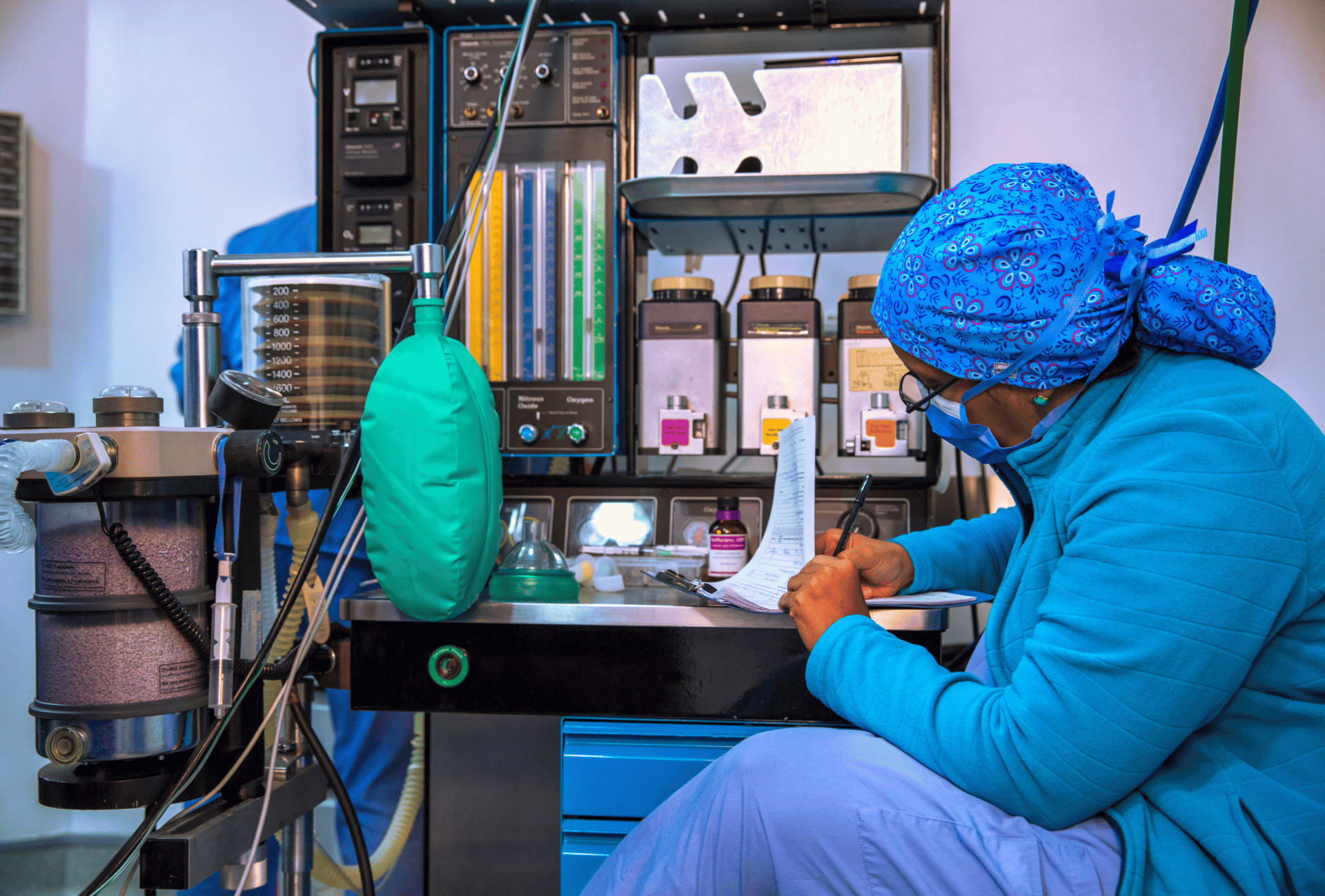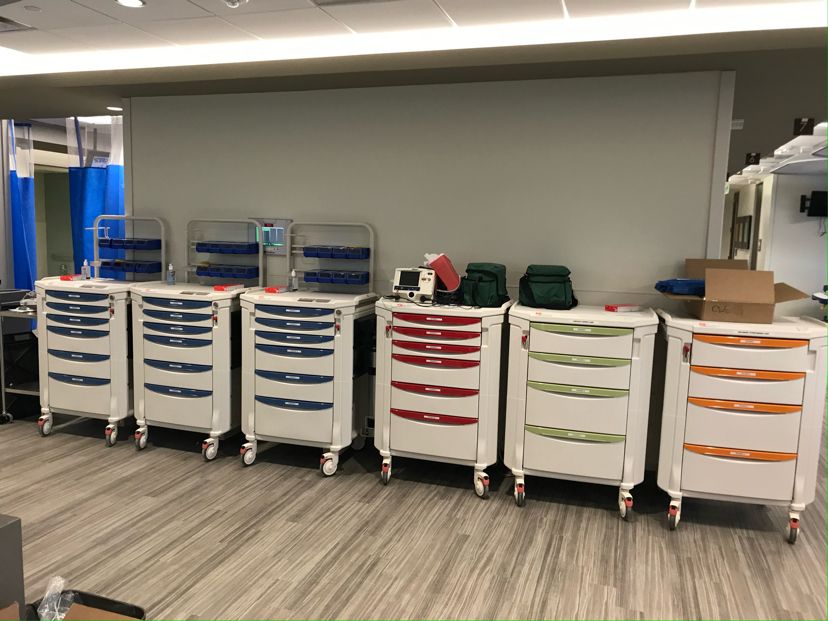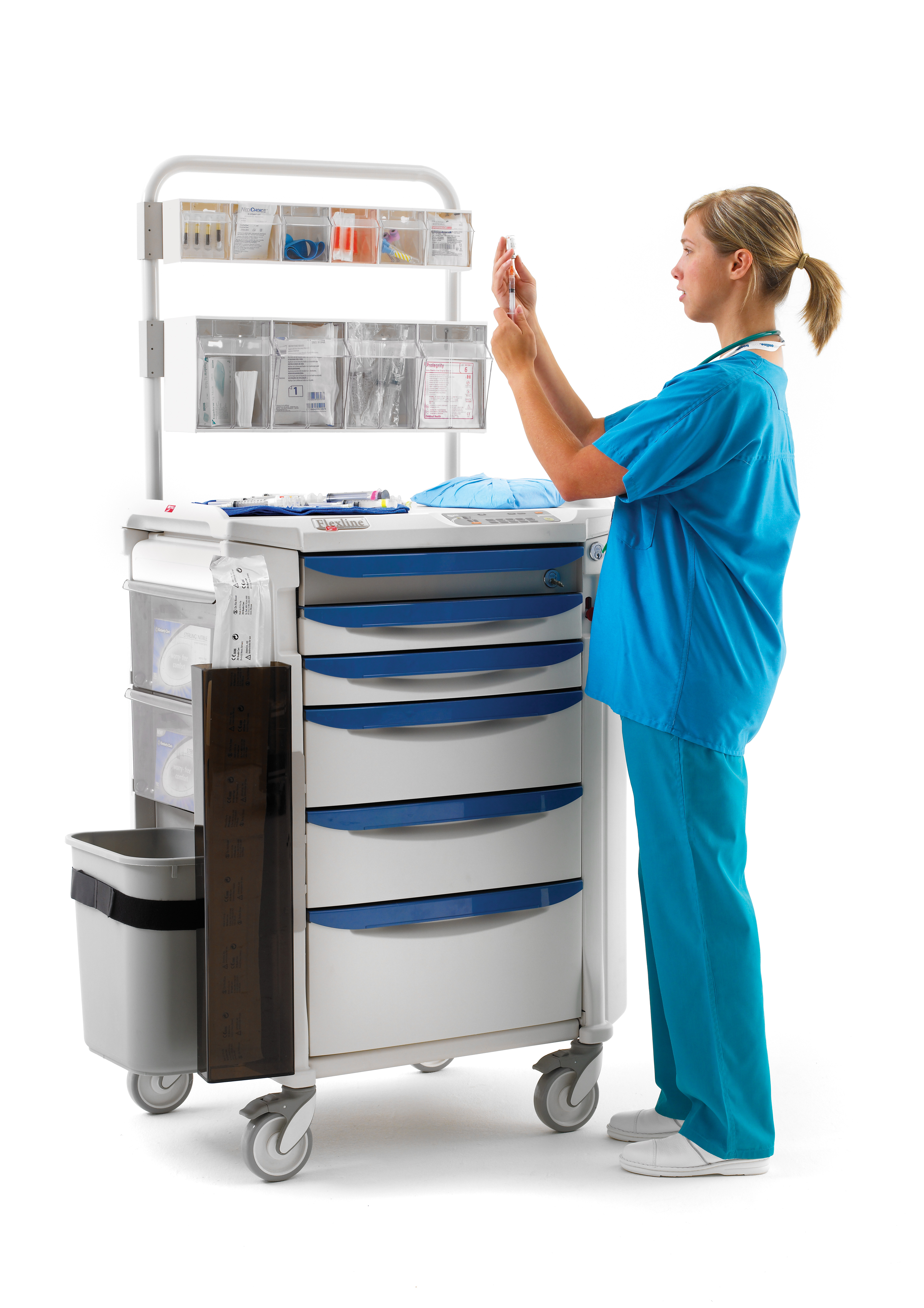Anesthesia carts are vital equipment in any anesthesia setting, ensuring that essential tools and medications are readily available to the anesthesia team. Whether for a planned operation, an outpatient procedure, or an emergency anesthesia administration, proper organization and setup of the medical cart is critical.
A properly stocked and well-organized cart ensures that should something go awry during a procedure or the administration of anesthesia, staff can find what they need quickly. After all, the welfare of the patient is at the forefront of providing medical care.
Proper anesthesia cart setup is key to making the most of your cart and ensuring positive patient outcomes. This guide provides a basic checklist for setting up your anesthesia cart, including organization principles and best practices.

Why Proper Anesthesia Cart Setup is Important
Maintaining a well-organized anesthesia supply cart ensures patient safety, enhances surgical efficiency, and supports team preparedness during procedures.
Additionally, proper cart setup can align with lean healthcare practices, which focus on maximizing value and minimizing waste. By organizing supplies to eliminate unnecessary steps and ensure efficient workflows, anesthesia teams can contribute to streamlined operations.
Here’s a deeper look at the benefits associated with establishing a standard anesthesia cart setup:
Preparation
Having all necessary tools and medications on hand—and knowing precisely where they are located—ensures that the anesthesia provider can respond quickly to any situation, including unforeseen complications. Proper setup, including correctly labeled medications, functioning equipment, and fully stocked supplies, minimizes the risk of adverse patient outcomes.
Efficiency
A well-organized anesthesia cart promotes smooth workflows in environments that are often congested. When supplies are logically arranged and easy to access, the anesthesia team can save valuable time and maintain the procedure flow, reducing delays that could affect patient outcomes and overall operating room performance.
Lean Healthcare
Proper medical cart setup also aligns with Lean healthcare principles to eliminate waste and enhance value. By organizing the anesthesia cart to reduce unnecessary movements and time spent searching for supplies, teams can optimize workflows and minimize resource waste.
Emergency Preparedness
It’s important to prepare your cart for emergencies, as well as textbook procedures. Emergency medications and specialized medical equipment must be readily available in critical situations, such as cardiac arrest and anaphylaxis. Meticulous organization helps prevent serious complications or fatalities during a procedure.
Regulatory Compliance and Standardization
Healthcare organizations are required to meet stringent regulations around anesthesia supply management and documentation. Noncompliance can result in the closure of the facility. Enacting and maintaining proper procedure cart setup will help ensure facilities comply with guidelines and regulations related to anesthesia cart setup.

The Basic Principles of Anesthesia Cart Organization
Anesthesia carts are designed with efficiency in mind, ranging from ergonomic design to durable and cleanable materials, such as advanced polymer. Carts should be set up with the same level of efficiency.
Here are the foundational guidelines for setting up an anesthesia cart:
Consistency
One of the best ways to ensure efficiency is to maintain a consistent arrangement of supplies across all anesthesia carts within the facility. Each drawer should have a designated equipment category, allowing staff to locate critical items quickly. A standardized layout reduces the time spent searching for supplies, especially during emergencies when every second counts.
Accessibility
When establishing a consistent layout, organize items based on frequency of use. Tools and medications needed for airway management and induction should be placed in the top drawers for quick access, while less commonly used supplies can be stored in lower drawers. The goal is to arrange the cart so that essential items are within reach without digging through multiple layers.
Proper Labeling
Each section of the anesthesia cart should be clearly labeled to facilitate quick identification of supplies. Color-coded labels and dividers can help further categorize items by use, such as airway management, IV supplies, and emergency drugs, streamlining the workflow.
First In, First Out
Use the first in, first out (FIFO) inventory control method to ensure that items at risk of expiring are used in the order they were received. Place newer supplies and medications behind older ones so that the older items are used first. Following FIFO helps healthcare facilities save money by reducing waste due to expiration.
Cart Security
Locking anesthesia carts is a regulatory standard across multiple agencies, as carts often contain controlled substances. Modern carts usually have keyless dual locking systems, with pin codes or swipe cards, to ensure that only authorized personnel can access these medications. The most advanced offer wireless user management to easily modify users and other loving features.
Maintenance
The anesthesia cart must be checked and restocked at the end of each procedure or shift. Expired medications should be replaced, and any missing or used items should be replenished. A regular maintenance routine helps ensure the cart is always prepared for the next procedure, reducing the likelihood of delays or missing critical supplies during surgery.

Anesthesia Cart Setup Checklist
Because anesthesia cart setups have not been standardized within the healthcare industry, they may vary between healthcare facilities. However, there are common essential supplies and equipment that should be consistently organized and readily accessible within the specialized medical carts.
The checklist below serves as a guide for stocking and organizing anesthesia carts, though the exact contents may differ depending on the specific type of anesthesia being administered and individual provider preferences.
Anesthesia Cart Contents
Anesthesia carts are typically organized by function, with items stored in labeled drawers to streamline access during surgery. Critical or frequently used supplies are often kept in the upper drawers for quick retrieval.
Here’s a breakdown of what you might find in a standard five-drawer anesthesia cart:

Medications
The top drawer usually contains important non-controlled medications, which should be neatly organized and labeled for easy access. These may include muscle relaxants, saline flushes, antiemetics, antibiotics, and emergency medications.
Controlled substances such as Propofol and Fentanyl are usually stored securely in the pharmacy and not kept in the cart.
Needles and Syringes
The second drawer is generally reserved for needles and syringes, sorted by type and gauge. This can include everything from syringes for general use to specialized items like spinal anesthesia needles and nerve block sets.
Airway Equipment
Airway management supplies, such as oropharyngeal (OPA) and nasopharyngeal (NPA) airways, along with endotracheal tubes (ETA), are often stored in the third and fourth drawers. Masks, tubing, and other airway accessories may also be included here, allowing the anesthesia provider to respond swiftly to airway emergencies.
Specialized Equipment
The bottom drawer, typically the largest, may hold AED equipment, specialized instruments, or less frequently used but critical items.
Anesthesia Cart Should Serve Your Needs
A well-organized anesthesia cart is essential for patient safety, operational efficiency, and overall preparedness. With no universal standardization of anesthesia cart setups, it is important to customize your specialized medical cart to best serve the needs of your own healthcare facility. Tailoring your anesthesia cart to your team’s workflow, storage preferences, and unique procedural demands ensures that critical supplies are always accessible, minimizing risks and maximizing productivity.
At Metro, we offer an extensive line of anesthesia carts in various designs, sizes, and configurations to ensure that all the supplies the anesthesiologist needs are readily available. Each cart comes with ample drawer space and can be outfitted with the accessories and features required by your team. Explore our options to create the ideal anesthesia cart for your facility.
